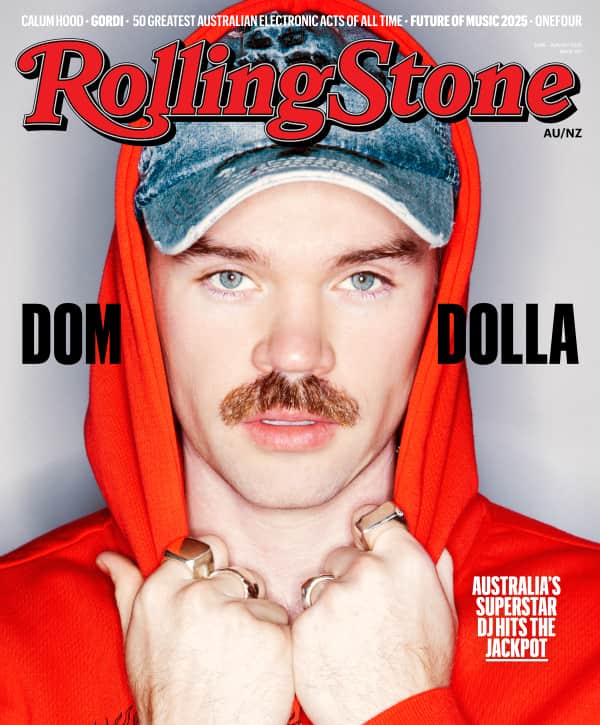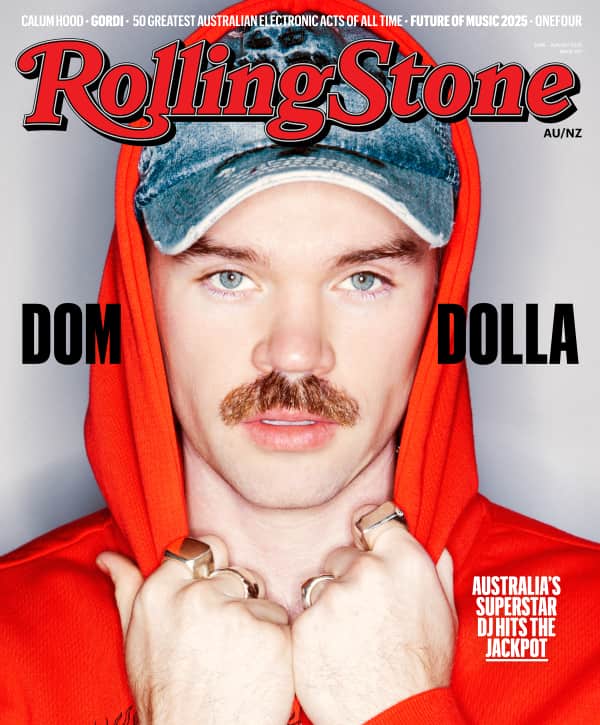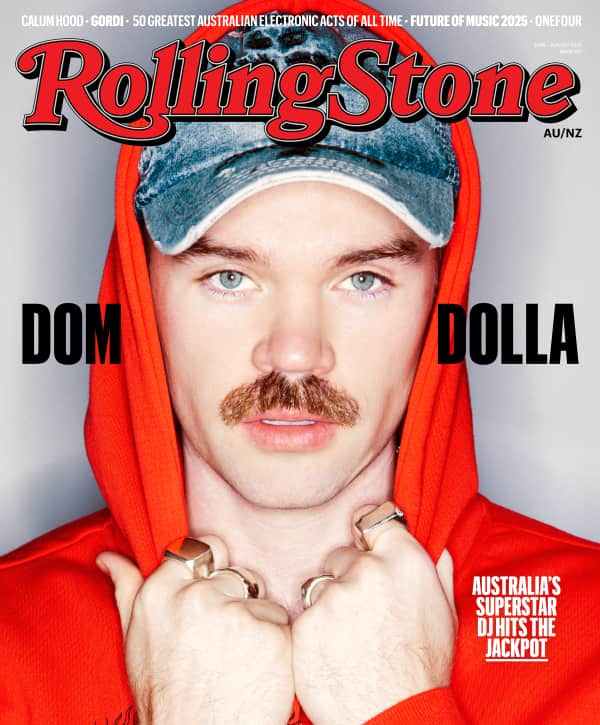In the summer of 1964 a young British rock band called the High Numbers released their debut single “Zoot Suit,” and watched it disappear without a trace. The supremely-forgettable song was written by their manager Pete Meaden; a few months later, when they headed back into the studio, they decided to rename themselves the Who and let guitarist Pete Townshend try his hand at songwriting. It was a wise decision. The first single released was “Can’t Explain,” which kicked off a stunning two-decade run of music that paved the way for punk, metal, power pop and progressive rock. In honour of the Who’s ongoing 50th anniversary tour, we have ranked their best songs.
50. “Boris the Spider” (‘A Quick One’, 1966)
“He was a very strange fellow,” Townshend said of Entwistle. “I loved John, obviously, for his eccentricities.” The first song Entwistle wrote for the Who bowled the band over, highlighting his dark, absurdist sense of humor and distinct playing style. Never released as a single, it still became the group’s most requested live song. According to Townshend, it was also Jimi Hendrix’s favorite Who song, which shouldn’t be all that surprising. “What’s interesting in our group is that the roles are reversed,” Townshend said. “John’s the lead guitar.”
49. “Relax” (‘The Who Sell Out’, 1967)
Written just prior to Townshend’s first LSD experience, this uncharacteristic slice of paisley power pop echoes the Beatles’ advice for trippers – “Turn off your mind, relax and flow downstream” – from “Tomorrow Never Knows.” “Relax” is reminiscent of the material Syd Barrett was recording with Pink Floyd, featuring a Hammond organ (played by Townshend) rising and falling tranquilly in the background. It concludes with a fury of acid-rock guitar that would launch some of the Who’s more explosive onstage jams during their extensive tours in 1967 and ’68, though it soon left their live set.
48. “Another Tricky Day” (‘Face Dances’, 1981)
Though the song was never released as a single, the Who shot a video for “Another Tricky Day,” a highlight of the otherwise lackluster Face Dances. In the album’s liner notes, Townshend thanked Texan keyboardist John “Rabbit” Bundrick, who became an ancillary member of the band at the time, for “help and inspiration on ‘Another Tricky Day.'” But the sentiment is pure Who, a defiant yet complex tune about music’s enduring power amid life’s problems. “Rock & roll will never die,” Daltrey sings. The Who folded just one year later. Since their return, this song has been appearing in their shows for years.
47. “Going Mobile” (‘Who’s Next’, 1971)
This exuberant Townshend-sung track was originally intended for a car-chase sequence in Lifehouse but ended up on Who’s Next. It was inspired, Townshend has said, by “me riding around in the mobile caravan I’ve bought.” Capturing the feel of driving in an air-conditioned auto, leaving the “police and the tax man” behind, the track featured another of Townshend’s early forays into technology: his acoustic guitar run through what he called “one of the original crude guitar synthesizers. …It sounds just like a duck, doesn’t it?”
46. “Overture” (‘Tommy’, 1969)
This five-minute piece, which opens Tommy and foreshadows its thematic and musical themes, was an afterthought. When Townshend was working out the album’s narrative, he began it with “It’s a Boy,” but he told Rolling Stone in 1969, “That would have been too blunt of an opening.” Instead, he juxtaposed the urgency of “See Me, Feel Me” with the glee of “Pinball Wizard” in an instrumental intro: “This clues you in to a lot of themes and gives a continuity to the tracks.” It singlehandedly elevated the rock album to a “rock opera.”
45. “Bargain” (‘Who’s Next’, 1971)
One of the most euphoric moments on Who’s Next got an assist from guitarist Joe Walsh. In 1970, the Who took Walsh’s hard-rock trio the James Gang on tour as an opening act. Perhaps as a way to say thanks, Walsh gave Townshend a Gretsch acoustic guitar, which he ended up playing on “Bargain” when the band recorded it. Townshend began work on the song while demo’ing material for his Lifehouse project. “On Lifehouse, it was a love song, but a song about a higher love, a love between disciple and master,” he said. What emerged was an open-hearted expression of Townshend’s devotion to Sufism, and religious faith in general: “How much of a bargain it would be even to love everything in order to be at one with God,” he said later. Over the course of several sessions with producer Glyn Johns at London’s Olympic Studio, “Bargain” grew into a triumphant anthem, with Moon delivering an explosive yet intricate performance many consider one of his finest and Daltrey sending the song’s powerful sentiment skyward. Daltrey said years later that Who’s Next songs like “Bargain” were “rooted inside of us.”
Love Music?
Get your daily dose of everything happening in Australian/New Zealand music and globally.
44. “Trick of the Light” (‘Who Are You’, 1978)
Entwistle wrote songs about men facing things they feared, whether it was a furious spouse (“My Wife”), alcoholism (“Whiskey Man”), a creepy spider (“Boris the Spider”) or death (“Heaven and Hell”). Here, he came up with a tune about a man so unsure about his sexual prowess that he hires a prostitute and begs her for an honest assessment of his skills. His thundering bass and growling vocals make this his most overlooked Who track. In the Who Are You liner notes, Townshend describes Entwistle’s playing on “Trick of the Light” as sounding like “a musical Mack truck.”
43. “I Can’t Reach You” (‘The Who Sell Out’, 1967)
With its original title, “See, Feel, Hear You,” anticipating “See Me, Feel Me,” this rapturous, yearning pop gem was written by Townshend shortly before he adopted Meher Baba as his spiritual adviser. Describing his frame of mind at the time, Townshend later admitted, “I can say without pretensions that I was looking for someone.” The song’s lyrics, meanwhile, are intriguingly ambiguous about whether the object of his desire is spiritual or sexual. It was also one of the first songs that Townshend wrote on piano; he happily recalled that its refreshing simplicity was “caused by my inability to play!”
42. “Let’s See Action” (Non-album single, 1971)
Released between the twin towers of Who’s Next and Quadrophenia, this non-LP track, sung tag-team over acoustic guitar and boogie-woogie- flavoured piano by Nicky Hopkins, found Townshend in an unusually activist state of mind. He was inspired partly by the teachings of Meher Baba (see its “everything is nothing” mantra), and later described the song as being “about the people who act in a revolution, and the people that sit back. I thought it also said a lot about the way we forget our souls most of the time.” A fascinating demo version surfaced in 1972 on Townshend’s solo debut, Who Came First.
41. “Young Man Blues” (‘Live at Leeds’, 1970)
The Who started playing American jazz-blues singer Mose Allison’s “Young Man Blues” in 1964, when they were still the Detours. According to Townshend, the song also inspired his first “My Generation” demo. The Who recorded it during early Tommy sessions, but Townshend decided to include their take on Allison’s version of Sonny Boy Williamson’s “Eyesight to the Blind” instead. By the time the Who recorded what would become Live at Leeds’ raging opener (actually the show’s fifth song), “Young Man Blues” had evolved into a powerful call-and-response between Daltrey and his bandmates.
40. “Heaven and Hell” (Non-album B-side, 1970)
The Who opened nearly every gig on their 1970 Tommy tour with Entwistle’s hard-driving “Heaven and Hell,” a death-obsessed tune that served as a kind of energetic warm-up for the band. “I basically wanted to write a song with a big subject, an important subject rather than spiders or drunks,” said Entwistle. “The original version … had a different chorus. It was basically ‘I’d much rather stay in the middle with my friends because I don’t like the sound of either of them.’ I still don’t. I don’t fancy hell or heaven.” The bassist also recorded a version of the song on his 1971 solo album, Smash Your Head Against the Wall.
39. “I’m a Boy” (Non-album single, 1966)
Released in August 1966, “I’m a Boy” let Who fans know that Townshend was interested in topics well beyond typical pop-song subject matter. The story of a boy whose parents dress him up like a girl was originally meant to be part of a rock opera called Quads that Townshend never completed. But the notion of a child tortured by his parents came back two years later when he began work on Tommy. “I’ve always addressed and acknowledged child abuse, the neglect of children, the misunderstanding of adolescence,” Townshend said in 1993. “The first song in which I addressed it was ‘I’m a Boy,’ but it’s always been there.”
38. “Christmas” (‘Tommy’, 1969)
Kicking off side two of Tommy, “Christmas” is one of the album’s saddest moments, in which we learn Tommy’s parents don’t think their deaf, dumb and blind son could appreciate the holiday. Townshend recorded the song as a sparse, piano-based demo. (The original lyrics had the line “playing with himself, he sits and smiles,” which was later revised to introduce Tommy’s love for pinball.) As soon as the bandmates got their hands on the song, they turned it into a bombastic showstopper, with Townshend and Daltrey both taking vocal turns. For a definitive version of “Christmas,” see the expanded Live at Leeds.
37. “Long Live Rock” (‘Odds and Sods’, 1974)
We were the first band to vomit in the bar,” brags Daltrey in this self-aware anthem, a celebration of the band’s history that includes allusions to clueless promoters and ticket scalpers. Recorded in 1972, the song was originally intended to be part of Rock Is Dead – Long Live Rock, an unfinished autobiographical 1972 album that morphed into Quadrophenia. “Long Live Rock” wouldn’t get an official release until the 1974 collection Odds and Sods, with Townshend writing in the liner notes that “there are dozens of these self-conscious hymns to the last 15 years appearing now, and here’s another one.”
36. “Slip Kid” (‘The Who by Numbers’, 1975)
The intensely personal Who by Numbers opens with a message about the perils of fame. The deceptively bouncy “Slip Kid” informs would-be rock stars that “it’s a hard, hard world.” “It came across as a warning to young kids getting into music that it would hurt them,” said Townshend. “It was almost parental in its assumed wisdom.” After Pearl Jam’s tragic set in 2000 at Denmark’s Roskilde, which resulted in the death of nine fans, Eddie Vedder turned to the tune for comfort. “There’s a line [in the song], ‘There’s no easy way to be free,'” he said in 2006. “I was thinking, ‘I couldn’t agree with you more.'”
35. “The Acid Queen” (‘Tommy’, 1969)
Townshend described Tommy‘s Acid Queen character as a metaphor for peer pressure – a “black-hearted gypsy who had promised to bring Tommy out of his autistic condition but was actually a sexual monster, using drugs to break him.” Moon’s anarchic drumming and Townshend’s torrential guitar and chilling lyrics (“His head, it shakes/His fingers clutch/Watch his body writhe”) drive home the dark drama. When Tina Turner took on the role of the Acid Queen for the 1975 film version of Tommy, she played it even more predatorily than Daltrey does on the LP. Townshend called her performance “stunning.”
34. “However Much I Booze” (‘The Who by Numbers’, 1975)
In case there was any doubt that substance abuse was slowly taking its toll on the Who by 1975, the band came out with a song called “However Much I Booze,” on which Townshend declares there “ain’t no way out” from his near-crippling alcohol addiction. “I forced the band into a corner with that material,” he said. It’s easy to see why Daltrey refused to handle the song’s vocals (“I’ve never been drunk onstage in seven years,” he said at the time), and it’s just as easy to understand why they haven’t played it live in 40 years. Yet “However Much I Booze” remains a revealing, moving cry for help.
33. “Pictures of Lily” (Non-album single, 1967)
Allegedly written after Townshend’s parents caught him masturbating (and asked, “Why can’t he go out with girls, like other boys?”), this remains a groundbreaking moment of lyrical intimacy and honesty in rock, and a hilarious one too. The song’s title was inspired by a picture Townshend’s girlfriend had of 1920s vaudevillian Lily Bayliss, though he later said, “It’s just a look back at the period in every boy’s life where he has pinups.” Daltrey sang the song with what he called “complete innocence,” and the band promoted it with a series of risqué postcards, causing a mild controversy that helped assure its Top 10 success.
32. “You Better You Bet” (‘Face Dances’, 1981)
“A surprise hit single for us,” Townshend said. “We even went back on Top of the Pops.” Tough and to the point, “You Better You Bet” reflects the way Townshend’s enthusiasm for punk rock was tightening his songwriting. Addressed to his new girlfriend, it also hits a note of sly nostalgia when Daltrey sings about getting drunk “to the sound of old T. Rex.” Daltrey, who has compared the song’s bouncing melody to Elvis Presley, considers it a lone bright spot on 1981’s Face Dances, their first album after the death of Moon: “‘You Better You Bet’ is still one of my favorite songs of all.”
31. “Who Are You” (‘Who Are You’, 1978)
One of the last great lionhearted Who anthems, “Who Are You” summed up Townshend’s disillusion with where rock had gone during the late Seventies, and his desire to find authenticity amid the malaise. “It’s actually a prayer,” Townshend said later. “I was trying to sort out who, where, what God was.” He wrote it after a contentious business meeting about unpaid royalties devolved into a drunken spree, during which Townshend ran into two members of the Sex Pistols in a club called the Speakeasy. Falling on his knees at the feet of drummer Paul Cook, he told the young punk musician, “Rock has gone down the fuckin’ tubes.” The incident planted the seed for a high-powered song that Townshend called “an encyclopedia for up-and-coming groups about how not to get caught.” Finishing “Who Are You” required some effort. Producer Jon Astley said that Townshend “turned up with this very long demo of the track … with all this stuff happening on it.” Astley got to work cutting five minutes out of the song, and the end result became a Top 20 hit in America and the U.K., proof that the Who weren’t done just yet.
30. “5:15” (‘Quadrophenia’, 1973)
The debut single on Quadrophenia, and the lead track of the album’s second disc, is delivered in call-and-response vocals by Daltrey and Townshend. Amid images of polymorphous sexuality, they describe a pill-loving protagonist (“Out of my brain on the train”) over Townshend’s dukes-up guitar lines, brash horns by Entwistle and rollicking piano by moonlighting Joe Cocker sideman Chris Stainton. Unlike most of Quadrophenia, which required painstaking work, “5:15” came to Townshend quickly (“While I was killing time between appointments,” he recalled) and was written in the studio the day it was recorded.
29. “Pure and Easy” (‘Odds and Sods’, 1974)
A crucial song from the abandoned Lifehouse project, “Pure and Easy” was originally designed to set the stage for that concept album’s story about an eternal note of music that unites civilisation. Once Townshend decided to scrap Lifehouse in favor of Who’s Next, the majestic “Pure and Easy” wound up on the cutting-room floor, surfacing later on his 1972 solo LP Who Came First and the Who’s 1974 compilation Odds and Sods. “It was the kernel behind Who’s Next,” Townshend said. “But it never made it onto that record. In a sense, the heart [of Who’s Next] was missing.”
28. “Sparks” (‘Tommy’, 1969)
This Wagnerian instrumental track evokes the Who’s live power more than anything else on Tommy. Townshend had wanted Tommy to have other interstitial material that would include battle noises and pinball sound effects, but abandoned the idea in his rush to complete the album. Originally titled “Dream Sequence,” “Sparks” got its title from a 1962 collection of Meher Baba sayings called Sparks of the Truth and recycled a musical theme from “Rael,” a mini-opera on The Who Sell Out. Townshend later said the version on Live at Leeds “gets as close as what’s possible for that classical-rock thing.”
27. “Happy Jack” (Non-album single, 1967)
Townshend wrote this whimsical two-minute “nonsense song” while thinking about the kind of village idiot he used to see as a child on the beaches of the Isle of Man, where his family spent their summers. He emphatically claimed that “never in a million years will it be a hit for the Who.” Despite his protests, manager Kit Lambert put it out as a U.K. single in 1966, and when its jittery rhythm, empathetic lyrics and sweet harmonies earned it a Number 24 chart position in the U.S., Townshend called it a “hard ego lesson.” Harder still, Paul McCartney would later tell him it was his favourite Who song.
26. “A Legal Matter” (‘My Generation’, 1965)
Townshend made his vocal debut on “A Legal Matter” – the group’s impish ode to divorce. Daltrey, who was married at the time, might’ve been leery of singing lyrics like “I gain and lose my women fast.” Townshend, on the other hand, just looked at the hard-charging B-side to “The Kids Are Alright” as a means of expressing his frustration. “It’s terrible feeling like an eligible bachelor but with no women seeming to agree with you,” he said. The song was later released as a single in its own right – ironically, the same week in 1966 when Keith Moon married model Kim McLagan.
25. “How Many Friends” (‘The Who by Numbers’, 1975)
When Townshend first played the brutally honest, emotionally desolate songs that would comprise The Who by Numbers, Moon walked over and gave the guitarist a hug. By the sound of “How Many Friends,” he could’ve used it. “How many friends have I really got?/ You can count ’em on one hand,” Daltrey sings on this elegiac tune, which alluded to Townshend’s conflicted sexual identity and distance from the Who. “There was something else behind that song,” Townshend said later. “That rock itself was supposed to deliver something different. That was a hope that wasn’t fulfilled.”
24. “Sunrise” (‘The Who Sell Out’, 1967)
Amid the fake commercials, psychedelic freakouts and bizarre comic twists on The Who Sell Out sits “Sunrise,” a lovely acoustic track featuring just Townshend’s voice and his Harmony 12-string. The song’s bright melody, nimble finger-picking and melancholy lyrics were a break from the Who’s chaotic intensity, and not everyone in the band was thrilled to see Townshend branching out. “Keith didn’t want that on the record,” Townshend said in 1980. “In a way, that’s a bit of a giveaway to the fact that at the time I was studying a bit of this jazz thing. I wrote it for my mother to show her that I could write real music.”
23. “Magic Bus” (Non-album single, 1968)
Written in 1965, this first surfaced as an obscure 1967 single cut by beatnik barbershop U.K. pop rockers the Pudding. The Who’s version was a gem of groove-heavy psychedelia, riding a Bo Diddley beat with a signature clave rhythm played by the band’s road man- ager/sound man Bob “Ben Pump” Pridden. It was released in various renditions. But the eight-minute take that appears on Live at Leeds, with Daltrey wailing on harmonica, may be the wildest. Fittingly, Martin Scorsese made it a high point of the soundtrack for Ray Liotta’s coked-up driving scene in Goodfellas.
22. “The Seeker” (Non-album single, 1970)
This anthem of spiritual questing wasn’t born in an ashram; Townshend wrote it during a night of hard partying during a U.S. tour, in a “mosquito-ridden swamp [in Florida] at three in the morning, drunk out of my brain …. Quite loosely,” he once said, “‘The Seeker’ [is about] what I call Divine Desperation.” In lyrics predicting John Lennon’s “God” (released later that year), Daltrey name-checks the Beatles, “Bobby Dylan” and Timothy Leary, but none of them have the answers he needs. “We’re looking at each other,” he concludes, “and we don’t know what to do.” Unusually, the band self-produced the track, as producer Kit Lambert was laid up with a broken jaw. But the sound mix roared, and it became the first single the Who released after the triumph of Tommy. “The Seeker” was an underperformer on the pop charts, but it remained a potent statement. Townshend played it acoustic at Meher Baba gatherings, and the Who’s live performances of the song were overpowering – “an elephant,” said Townshend, that “finally stampeded itself to death on stages around England.”
21. “My Wife” (‘Who’s Next’, 1971)
After getting into an argument with his wife, Alison, Entwistle took his dogs for a walk. By the time he returned home, he had this tune mapped out – “one of those instant songs,” he said. He played bass, piano and horns on the thunderous track. And the deadpan lyrics – about a spouse who goes on a murderous tear after hearing her husband might have had an affair – are quintessential Entwistle. “She always thought it was very funny,” he said of Alison’s reaction to “My Wife.” “She always had the ambition to come on and hit me over the head with a rolling pin halfway through it when I was doing it onstage.”
20. “I’m Free” (‘Tommy’, 1969)
With an elastic guitar riff and an uplifting chorus, “I’m Free” is Tommy at its most optimistic. In his 2012 memoir, Townshend described it as the opera’s “moment of realisation.” It’s one of many songs he wrote during this period that were influenced by the teachings of Meher Baba. Musically, the inspiration for its shuffling rhythm came from a more earthly source: the Rolling Stones’ 1968 classic “Street Fighting Man.” “When I finally discovered how [the Stones song] went,” Townshend said, “I thought, ‘Well, blimey, it can’t be that simple’ but it was … and I wanted to do it myself.”
19. “Tattoo” (‘The Who Sell Out’, 1967)
This clever and poignant initiation story from Townshend’s “absurd album of melody and humor” was an early example of a commitment to narrative songs. “Tattoo” was first demo’ed in Las Vegas during a three-day break from the Who’s 1967 American tour opening for Herman’s Hermits. Townshend later said he “was inspired by recent events on the road: Were we men or were we something else?” The guitarist was worried Daltrey might not want to sing lyrics about doubting your own masculinity. “He sang it really well,” Townshend recalled. “And I realized then … he’s got the same insecurities I do.”
18. “I’m One” (‘Quadrophenia’, 1973)
Opening with Townshend singing in a heartbreaking high tenor over acoustic guitar, “I’m One” flips on the second verse, with the singer flicking out his electric guitar like a switchblade and the band rushing in alongside him. “When I was a nipper, I always used to feel that the guitar was all I had,” Townshend said, introducing the song live in 1973. “I wasn’t tough enough to be a member of the gang, not good-looking enough to be in with the birds, not clever enough to make it at school, not good enough with the feet to make a good football player. I was a fucking loser. I think everybody feels that way at some point.”
17. “Blue, Red and Grey” (‘The Who by Numbers’, 1975)
When it came time for a follow-up to Quadrophenia, Townshend decided to scale things back and made The Who by Numbers, a stripped-down confessional album about his own insecurities and demons. “Blue, Red and Grey” was a moment of optimism amid the darkness, a simple, oddly beautiful ode to enjoying life that was written on the ukulele and recorded on a home demo. Townshend was stunned when producer Glyn Johns insisted it appear on The Who by Numbers. “I said, ‘What? That fucking thing?'” Townshend said. “‘Here’s me wanting to commit suicide, and you’re going to put that thing on the record?'”
16. “So Sad About Us” (‘A Quick One’, 1966)
“I think it’s a terrific number,” Townshend said of “So Sad About Us” in 1966. “We do it onstage – but the final record was nothing like the original demo disc I made of it.” The Who recorded this prim breakup tune in 1966, though it was originally written for the Merseys, a band that shared the Who’s manager and had a hit with a Townshend-produced version of the song that same year. With an intro that recalls the ringing guitars of the Byrds, it’s one of the more vulnerable moments of the band’s breakneck early years. It wasn’t released as a single, but it’s been covered by fans from the Jam to the Breeders.
15. “The Real Me” (‘Quadrophenia’, 1973)
The opening salvo for Quadrophenia is the sound of four men driving at full throttle. Entwistle delivers what might be his greatest recorded performance – as he proudly put it, the song was essentially “a bass solo with vocals.” “The Real Me” captures the contradictory nature of the album’s main character, Jimmy, screaming at his mother, his priest and his shrink, challenging them to truly see him. “You have the big, big, big bass of John Entwistle, the big, big drums of Keith Moon, the power chords, the huge voice of Roger Daltrey,” said Townshend, “and what they’re actually saying is ‘I’m a pathetic little wimp.'”
14. “The Kids Are Alright” (‘My Generation’, 1965)
“It sounds symphonic,” Townshend said of “The Kids Are Alright.” Recorded in the same session that produced “My Generation,” the song is another celebration of the mod subculture, replacing angry defiance with something more communal and kindhearted. Originally slated as a B-side for “My Generation,” it became a single at the insistence of producer Shel Talmy. Moon later claimed the mod image was foisted on the band. Townshend held that allegiance much more dearly. “As a force, they were unbelievable,” he told Rolling Stone in 1968. “Everybody just grooving on being a mod.”
13. “Pinball Wizard” (‘Tommy’, 1969)
When Townshend was first developing Tommy, he played it for music critic Nik Cohn, who felt the emotionally intense opera was a bit dark. “If it had pinball in it, would you give it a decent review?” the guitarist asked Cohn, who responded, “Of course I would. Anything with pinball in it is fantastic.” The resulting “rockaboogie” tune, as Townshend has called it, became one of the Who’s most enduring anthems. As he said later, “If I had failed to deliver the Who an operatic masterpiece that would change people’s lives, with ‘Pinball Wizard’ I was giving them something almost as good: a hit.”
12. “Behind Blue Eyes” (‘Who’s Next’, 1971)
Townshend once called this gorgeous ballad “the closest to a love song I’ve ever written and managed to get the Who to perform.” He has implied “Behind Blue Eyes” is about being tempted (unsuccessfully) by a groupie on the road in 1970. But he has also said the song is about the villain of his Lifehouse project, who was “feeling he is forced into playing a two-faced role.” In that regard, Townshend saw himself in the lyric: “I do tend to lie my way out of things more often than I should,” he’s said. Either way, the arrangement – which shifts from unplugged softness to plugged-in fury – is as multifaceted as its lyrics.
11. “Substitute” (Non-album single, 1966)
“Substitute” was inspired by the media’s frequent assertion that the Who were essentially a poor man’s substitute for the Rolling Stones. “It was written as a spoof of ’19th Nervous Breakdown,'” Townshend said in 1971. “On the demo, I sang with an affected Jagger-like accent.” The song shot to the U.K. Top Five. For its American release, Daltrey was forced to change the line “I look all white, but my dad was black” to “I try going forward, but my feet walk back.” “Substitute” still failed to dent the U.S. charts, and even today Daltrey feels he didn’t nail his vocal: “I didn’t really find my voice until we got to Tommy,” he said.
10. “Eminence Front” (‘It’s Hard’, 1982)
After 1982’s disappointing It’s Hard, the Who didn’t record another album until 2006. “I hated it,” said Daltrey. “I still hate it.” But the LP’s lone hit, “Eminence Front,” showed they could connect Townshend’s New Wave-influenced solo work with the classic sound of Who’s Next. “‘Eminence Front’ was written around a chord progression I discovered on my faithful Yamaha E70 organ,” Townshend recalled. “I hesitate to try to explain what it was about. It’s clearly about the absurdity of drug-fueled grandiosity, but whether I was pointing the finger at myself or at the cocaine dealers of Miami Beach is hard to recall.”
9. “We’re Not Gonna Take It/See Me, Feel Me” (‘Live at Leeds’, 2001)
As documented at Woodstock, the Isle of Wight and on the complete Live at Leeds reissue, Tommy’s grand finale became even grander over the course of more than 100 performances of the opera during 1969 and 1970. Townshend originally wrote “We’re Not Gonna Take It” as an anti-fascist song prior to conceiving Tommy, while “See Me, Feel Me” was inspired in part by memories of his abusive grandmother and released alone as a single after the Who’s triumph at Woodstock. With its heraldic, redemptive “Listening to You” coda, featuring Daltrey at his blond rock-god apex, “We’re Not Gonna Take It/See Me, Feel Me” remains the high point of Who sets to this day.
8. “Getting in Tune” (‘Who’s Next’, 1971)
“I can’t pretend there’s any meaning hidden in the things I’m saying,” sings a pensive Daltrey at the start of this Who’s Next track. But as with anything Townshend writes, “Getting in Tune” was hardly about nothing; it’s fraught with deep, complicated messages. Another track from the aborted Lifehouse project, the song’s arrangement encapsulates the many rich musical sides of the Who. It starts quietly, with session man Nicky Hopkins’ piano and a fluid Entwistle bass, before quickly working itself up into timeless Who thunder, complete with some of Moon’s splashiest, most tempo-shifting rhythms. The lyrics are simple but multidimensional: “I’m gonna tune right in on you” could be interpreted as standard love-song material, but as Townshend once explained, the words were actually inspired by the work of Indian Sufi master Hazrat Inayat Khan – in particular, Townshend noted, “where he says music is one way of individuals getting in tune with one another.” It’s a theme that reverberates in much of Townshend’s work.
7. “I Can’t Explain” (Non-album single, 1964)
The quartet’s debut single after changing their name from the High Numbers to the Who became a Top 10 hit in the U.K. in 1965, introducing them to a mass audience and jump-starting their stellar run of Sixties singles. “I Can’t Explain” was a power-pop rocket of adrenaline riffs and raw clatter. “A blurter and burster,” Townshend said of the song in 1968. Part of the credit for that blurting sound goes to producer Shel Talmy, an American who had moved to England to work for Decca Records. Talmy had recently helmed the Kinks’ epochal single “You Really Got Me,” which Townshend adored. “It can’t be beat for straightforward Kink copying,” Townshend said. “There is little to say about how I wrote this. It came out of the top of my head when I was 18-and-a-half.” Unsure the Who were up to the task, Talmy brought in session musicians, including 20-year-old guitarist Jimmy Page, as well as backing vocalists to help with the song’s harmonies. But the performance is unmistakably the Who, the opening bow shot in a 50-year story.
6. “Baba O’Riley” (‘Who’s Next’, 1971)
Spirituality, sonic adventurousness and the power (and failings) of rock & roll culture: All those concepts and themes converged in the epic track that opened Who’s Next. The title is a nod to Townshend’s guru Meher Baba and avant-garde composer Terry Riley. (The “O” was a sly wink to the jig-like section of the song driven by a fiddle.) Riley’s influence was particularly felt in the keyboard that opens the song – an effects-driven organ played in a mesmerising, repetitive pattern. One of many songs originally conceived for Townshend’s aborted Lifehouse project, “Baba O’Riley” is, on one hand, about a character in the project – a “farmer, out in the fields,” as Townshend has said. But the lyric also addressed the state of rock at the dawn of the Seventies: “the absolute desolation of teenagers after the second Isle of Wight festival, and after the Woodstock festival, where everybody was smacked out on acid and 20 people had brain damage,” Townshend said. “People were already running toward the culture and its promise of salvation. But not everyone survived.”
5. “Love, Reign O’er Me” (‘Quadrophenia’, 1973)
The Who’s mightiest ballad – though it’s so crushingly huge, the term “ballad” seems inadequate. Quadrophenia’s grand finale was initially conceived for a never-completed, post-Tommy rock opera (working title: Rock Is Dead – Long Live Rock) based on the Who’s backstory; see Townshend’s lean home recording of the song on Scoop. “Love, Reign O’er Me,” subtitled “Pete’s Theme” to represent the author in the main character’s persona, opens with the forlorn sound of rain, drum thunder and ruminative piano. Then a synth melody enters, and Daltrey’s vocals build to a climax during which Moon delivers what might be his most breathtaking drum assault ever (trashing a studio full of percussion in the process). The title suggests spiritual as well as romantic love; it “refers to Meher Baba’s one-time comment that rain was a blessing from God,” wrote Townshend, a nod to his Indian spiritual adviser. The song only dented the singles chart (Number 76) in a shortened version, but the number of love-struck mixtapes the original capped is anyone’s guess.
4. “A Quick One, While He’s Away” (‘A Quick One,’ 1966)
By late 1966, Townshend had been churning out thrilling singles for nearly two years. But he was anxious to try something that broke away from the structure of pop altogether. He wound up writing a nine-minute opus that was dubbed a “mini opera,” divided into six distinct parts, about a woman who misses her absent lover and winds up cheating on him with a bloke named Ivor the Engine Driver. The song incorporates everything from folk to blues to country to pile-driving rock & roll. The Who wanted to hire cellists to play near the climax, but due to budget shortfalls they wound up merely chanting the word “cello” over and over again to glorious effect. The hilarious, frenetic results were unlike anything else in 1966, though it wasn’t until years later that Townshend saw a deeper meaning. “It is the story that many of us postwar kids share of being sent away,” he said in 2012. “And of losing a precious loved one and being greatly changed when they returned.”
3. “My Generation” (‘My Generation’, 1965)
Townshend supposedly wrote “My Generation” on his 20th birthday, May 19th, 1965, while riding a train from London to Southampton for a television appearance. The song wasn’t intended as a youth-mutiny anthem at first. It was a Jimmy Reed-style blues, reflecting Townshend’s fears about the impending strictures of adult life, famously captured in the line “Hope I die before I get old.”
“‘My Generation’ was very much about trying to find a place in society,” he told Rolling Stone in 1987. “I was very, very lost. The band was young then. It was believed that its career would be incredibly brief.” Instead, “My Generation” became the Who’s ticket to legend. Townshend’s two-chord assault, Daltrey’s stuttering, howling performance, Moon’s avalanche drumming, and Townshend and Entwistle’s R&B-inspired backing vocals created a mounting anxiety that climaxed with a studio re-creation of the Who’s live gear-trashing finales. It became their first British Top Five hit – and a battle cry for young mod rebels all over England.
2. “I Can See for Miles” (‘The Who Sell Out’, 1967)
Townshend recorded “I Can See for Miles” as a demo in 1966, and the Who’s managers were so positive it was a guaranteed smash that they decided to shelve it until a time when the Who desperately needed a hit. This gave Townshend time to slowly craft his masterpiece. “It was written about jealousy but ended up being about the immense power of aspiration,” he said later. “I spent a lot of time working on the vocal harmonies and structuring it.” He began work at CBS Studios in London and finished months later at Gold Star in L.A., the same studio where Brian Wilson created his similarly ambitious “Good Vibrations” the previous year. Wilson’s efforts paid off with a song that topped the charts in both the U.K. and U.S. “I Can See for Miles” didn’t do well commercially in England (“Didn’t sell a single copy,” Townshend said. “I was humiliated”), but it did reach Number Nine in America, making it the Who’s biggest stateside hit. Despite his disappointment, Townshend knew he’d made something timeless. “One of the best songs I’ve ever written,” he later recalled.
1. “Won’t Get Fooled Again” (‘Who’s Next’, 1971)
The climactic finish to The Who’s best album is rock’s – and Pete Townshend’s – greatest declaration of independence: an epic storm of doubt, refusal, hypno-minimalist synthesiser and rolling-thunder power chords capped by a truly superhuman scream. “The song was meant,” the guitarist-composer said in 2006, “to let politicians and revolutionaries alike know that what lay in the centre of my life was not for sale.” But with that long, feral howl by Roger Daltrey, “as though his heart was being torn out,” as Townshend put it, the song “became something more to so many people” – a thrilling demonstration of rock’s power to elevate and unite in the face of any regime. Written for Townshend’s star-crossed opera Lifehouse, and first recorded in March 1971 at a discarded session with Mountain guitarist Leslie West, “Won’t Get Fooled Again” made its stage debut that April, quickly becoming a fixture of the Who’s live shows. Townshend’s recent licensing of the song for TV and films has not diminished its power or lyrical contempt for demagogues on both sides. At its core, “Won’t Get Fooled Again” – with its chorus image of Townshend on his knees, guitar in hands – is about music as moral force and salvation. “What is there,” he confessed, “is prayer.”





















































































